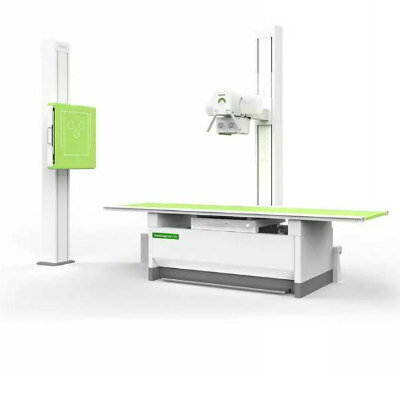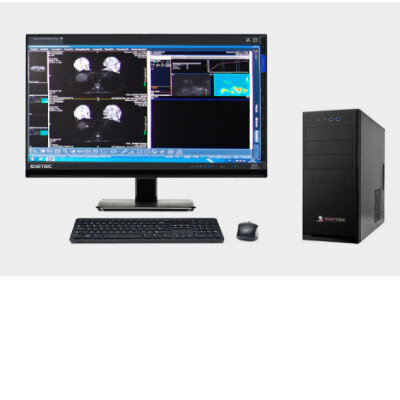AI Tool Predicts Lung Cancer Risk from Low-Dose Chest CT Scans
|
By MedImaging International staff writers Posted on 16 Jan 2023 |

Lung cancer is the leading cause of cancer death in the world. Low-dose chest computed tomography (LDCT) is recommended to screen people in the age group of 50 to 80 years who have a significant history of smoking or who currently smoke. Studies have shown that LDCT screening can reduce the risk of death from lung cancer by up to 24%. However, with the rates of lung cancer rising among non-smokers, there is a need for new strategies to screen and accurately predict lung cancer risk among a wider population. Now, researchers have developed and tested an artificial intelligence (AI) tool that accurately predicts the risk of lung cancer for individuals with or without a significant smoking history based on analysis of LDCT scans from patients.
In order to help improve the efficiency of lung cancer screening and provide individualized assessments, investigators from the Mass General Cancer Center (Boston, MA, US), in collaboration with researchers at the Massachusetts Institute of Technology (MIT, Cambridge, MA, USA), have developed Sybil, a deep-learning model that analyzes scans and predicts lung cancer risk for the next one to six years. In their study, the team validated Sybil using three independent data sets - a set of scans from more than 6,000 NLST participants who Sybil had not previously seen; 8,821 LDCTs from the US; and 12,280 LDCTs from Taiwan. The latter set of scans included people with a range of smoking history, including those who never smoked.
The researchers found that Sybil could accurately predict risk of lung cancer across these sets. The team determined Sybil’s accuracy using Area Under the Curve (AUC), which measures how well a test distinguishes between disease and normal samples and in which 1.0 is considered to be a perfect score. Sybil was able to predict cancer within one year with AUCs of 0.92 for the additional NLST participants, 0.86 for the MGH dataset, and 0.94 for the dataset from Taiwan. Sybil predicted lung cancer within six years with AUCs of 0.75, 0.81, and 0.80, respectively, for the three datasets. The researchers will now begin a prospective clinical trial to test Sybil in the real world and see how it can aid radiologists..
“Sybil requires only one LDCT and does not depend on clinical data or radiologist annotations,” said co-author Florian Fintelmann, MD, of the Department of Radiology, Division of Thoracic Imaging & Intervention at Massachusetts General Hospital. “It was designed to run in real-time in the background of a standard radiology reading station which enables point-of care clinical decision support.”
Latest General/Advanced Imaging News
- New AI Method Captures Uncertainty in Medical Images
- CT Coronary Angiography Reduces Need for Invasive Tests to Diagnose Coronary Artery Disease
- Novel Blood Test Could Reduce Need for PET Imaging of Patients with Alzheimer’s
- CT-Based Deep Learning Algorithm Accurately Differentiates Benign From Malignant Vertebral Fractures
- Minimally Invasive Procedure Could Help Patients Avoid Thyroid Surgery
- Self-Driving Mobile C-Arm Reduces Imaging Time during Surgery
- AR Application Turns Medical Scans Into Holograms for Assistance in Surgical Planning
- Imaging Technology Provides Ground-Breaking New Approach for Diagnosing and Treating Bowel Cancer
- CT Coronary Calcium Scoring Predicts Heart Attacks and Strokes
- AI Model Detects 90% of Lymphatic Cancer Cases from PET and CT Images
- Breakthrough Technology Revolutionizes Breast Imaging
- State-Of-The-Art System Enhances Accuracy of Image-Guided Diagnostic and Interventional Procedures
- Catheter-Based Device with New Cardiovascular Imaging Approach Offers Unprecedented View of Dangerous Plaques
- AI Model Draws Maps to Accurately Identify Tumors and Diseases in Medical Images
- AI-Enabled CT System Provides More Accurate and Reliable Imaging Results
- Routine Chest CT Exams Can Identify Patients at Risk for Cardiovascular Disease
Channels
Radiography
view channel
Novel Breast Imaging System Proves As Effective As Mammography
Breast cancer remains the most frequently diagnosed cancer among women. It is projected that one in eight women will be diagnosed with breast cancer during her lifetime, and one in 42 women who turn 50... Read more
AI Assistance Improves Breast-Cancer Screening by Reducing False Positives
Radiologists typically detect one case of cancer for every 200 mammograms reviewed. However, these evaluations often result in false positives, leading to unnecessary patient recalls for additional testing,... Read moreMRI
view channel
PET/MRI Improves Diagnostic Accuracy for Prostate Cancer Patients
The Prostate Imaging Reporting and Data System (PI-RADS) is a five-point scale to assess potential prostate cancer in MR images. PI-RADS category 3 which offers an unclear suggestion of clinically significant... Read more
Next Generation MR-Guided Focused Ultrasound Ushers In Future of Incisionless Neurosurgery
Essential tremor, often called familial, idiopathic, or benign tremor, leads to uncontrollable shaking that significantly affects a person’s life. When traditional medications do not alleviate symptoms,... Read more
Two-Part MRI Scan Detects Prostate Cancer More Quickly without Compromising Diagnostic Quality
Prostate cancer ranks as the most prevalent cancer among men. Over the last decade, the introduction of MRI scans has significantly transformed the diagnosis process, marking the most substantial advancement... Read moreUltrasound
view channel
Deep Learning Advances Super-Resolution Ultrasound Imaging
Ultrasound localization microscopy (ULM) is an advanced imaging technique that offers high-resolution visualization of microvascular structures. It employs microbubbles, FDA-approved contrast agents, injected... Read more
Novel Ultrasound-Launched Targeted Nanoparticle Eliminates Biofilm and Bacterial Infection
Biofilms, formed by bacteria aggregating into dense communities for protection against harsh environmental conditions, are a significant contributor to various infectious diseases. Biofilms frequently... Read moreNuclear Medicine
view channel
New SPECT/CT Technique Could Change Imaging Practices and Increase Patient Access
The development of lead-212 (212Pb)-PSMA–based targeted alpha therapy (TAT) is garnering significant interest in treating patients with metastatic castration-resistant prostate cancer. The imaging of 212Pb,... Read moreNew Radiotheranostic System Detects and Treats Ovarian Cancer Noninvasively
Ovarian cancer is the most lethal gynecological cancer, with less than a 30% five-year survival rate for those diagnosed in late stages. Despite surgery and platinum-based chemotherapy being the standard... Read more
AI System Automatically and Reliably Detects Cardiac Amyloidosis Using Scintigraphy Imaging
Cardiac amyloidosis, a condition characterized by the buildup of abnormal protein deposits (amyloids) in the heart muscle, severely affects heart function and can lead to heart failure or death without... Read moreImaging IT
view channel
New Google Cloud Medical Imaging Suite Makes Imaging Healthcare Data More Accessible
Medical imaging is a critical tool used to diagnose patients, and there are billions of medical images scanned globally each year. Imaging data accounts for about 90% of all healthcare data1 and, until... Read more
Global AI in Medical Diagnostics Market to Be Driven by Demand for Image Recognition in Radiology
The global artificial intelligence (AI) in medical diagnostics market is expanding with early disease detection being one of its key applications and image recognition becoming a compelling consumer proposition... Read moreIndustry News
view channel
Bayer and Google Partner on New AI Product for Radiologists
Medical imaging data comprises around 90% of all healthcare data, and it is a highly complex and rich clinical data modality and serves as a vital tool for diagnosing patients. Each year, billions of medical... Read more





















